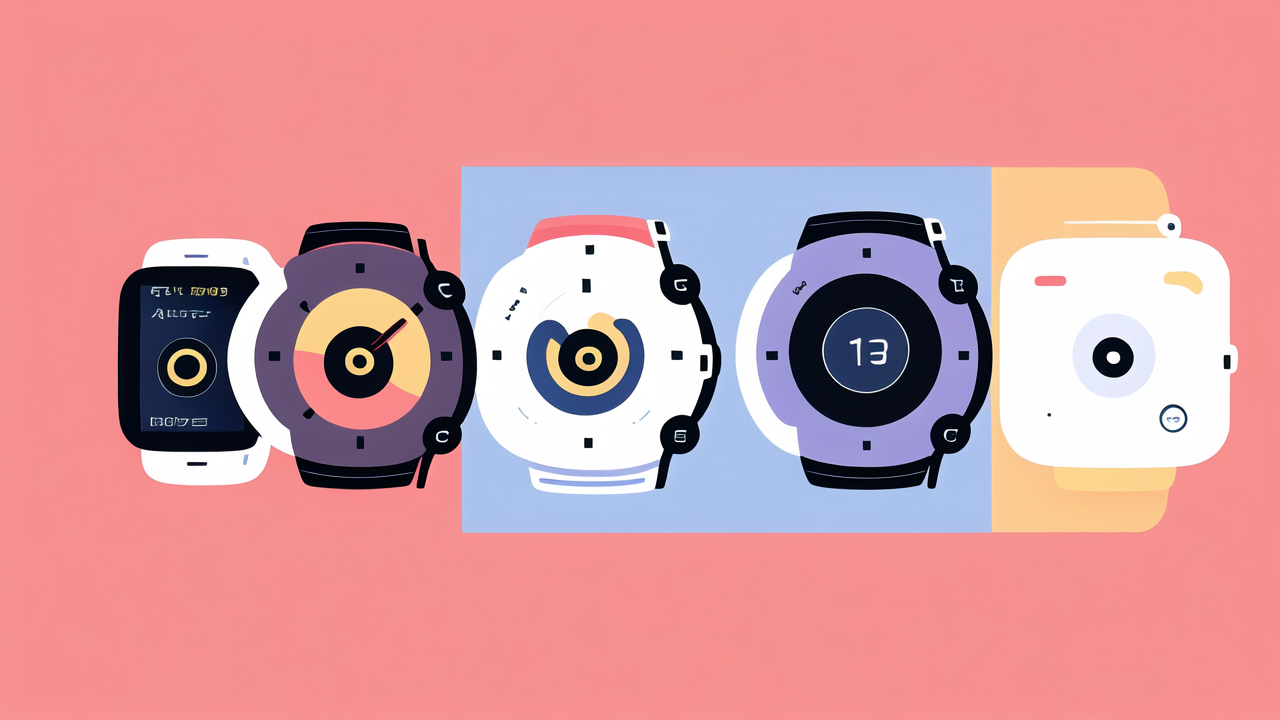Understanding the Smartwatch Market Landscape in the U.S.
The Evolution of Smartwatch Adoption in Consumer Markets
The U.S. has seen a swift uptake in smartwatch use. Early versions did simple tasks. They were more for tech fans than the average person. But nowadays, these gadgets do a lot. They track fitness, send messages, and even pay for stuff. Big tech brands have led the trend, making watches that work well and look good. Their focus on health and easy use has made more people want them. So lots of people now see them as must-haves, not just nice extras.

Key Players and Market Share in the U.S. Smartwatch Industry
In the U.S., a few big brands dominate the smartwatch market. They lead in sales and technology. These key players fight for the biggest market share. Their rivalry pushes the industry forward. Brands like Apple, Samsung, and Fitbit top the charts. They make smartwatches that many Americans use. It's a market worth billions and it grows each year. New brands try to get into the market too. They bring fresh ideas and styles. Together, all these brands shape what a smartwatch can do. They make sure customers have lots of choices. This keeps the U.S. smartwatch industry strong.
Regulatory Framework and Its Impact on Smartwatch Innovation
The U.S. regulatory framework plays a key role in the evolution of smartwatches. It shapes how devices are made and used. This includes rules on privacy, health, and safety. These laws can either speed up or slow down innovation. For instance, health apps must meet FDA standards. This ensures users' well-being but can also add development time. Thus, regulatory balance is vital for growth and trust in smartwatch tech.
The Role of Smartwatches in Transforming Health and Wellness
Integrating Health and Fitness Features in Smartwatches
Smartwatches have become health hubs on our wrists. They can track steps, heart rate, and sleep. Brands now add features like ECG and blood oxygen monitoring. They even remind us to move or take a breath. Popular fitness apps link with smartwatches for detailed tracking. Users set goals and monitor their progress easily. With these features, smartwatches support a healthier lifestyle.
The Impact of Wearable Technology on Personal Health Management
Smartwatches have changed how we manage health. They track our steps, heart rate, and sleep. This data helps us understand our bodies better. We can set goals and stay active. Doctors also use this data to check on patients. Wearables are a big part of the future of health.
Collaborations and Partnerships in the Healthcare and Tech Sectors
Partnerships are key to the health-focused smartwatch boom. In the United States, tech giants team up with health experts to refine their devices. This includes input on features like heart rate monitoring and sleep tracking. Research institutes often join the efforts, adding scientific weight to health data. Such collaborations foster trust in wearable tech. They also speed up smartwatch innovation in healthcare. This can lead to better patient care and health self-management. As a result, these partnerships are vital for the smartwatch's role in health and wellness.
Maximizing the Value of Smartwatches in Business and Enterprise
The Rise of Smartwatch Technology in the Workplace
Smartwatches have soared in workplaces across the U.S. Today's models do more than track steps. They sync with work apps, alert to emails, and even manage schedules. This has led to a surge in usage for on-the-job tasks. Firms of all sizes now tap into this trend. They aim to boost staff productivity and speed up data access. Even industries once slow to adopt tech are now trying out smartwatches. With new features rolling out, their place in work settings seems set to grow even more.
Enhancing Productivity and Efficiency with Smartwatches
Smartwatches bring efficiency to the workplace. They streamline tasks and improve workflow. Users get alerts and updates directly on their wrist. This cuts down time spent checking phones or computers. Some smartwatches can dictate messages or set reminders quickly. They help manage time and prioritize tasks better. Businesses find that smartwatches support staff in staying on top of their schedule. This device can sync with company systems for real-time data access. Overall, smartwatches boost productivity and operational efficiency.
Data-Driven Decision Making and the Role of Wearable Tech
In today's fast-paced business environment, smartwatches offer a potent tool for data-driven decision making. By providing real-time access to key metrics and analytics, these devices empower employees to make informed choices swiftly. Smartwatches track various indicators such as sales data, inventory levels, and delivery times. This allows teams to spot trends, identify potential issues, and react without delay. Furthermore, the integration of AI and machine learning enhances predictive capabilities, making it easier to anticipate market shifts. Wearable tech’s role in decision making demonstrates its potential to revolutionize business operations. However, companies must also address privacy and data security concerns to fully harness the benefits of smartwatches.




Leave a comment
This site is protected by hCaptcha and the hCaptcha Privacy Policy and Terms of Service apply.